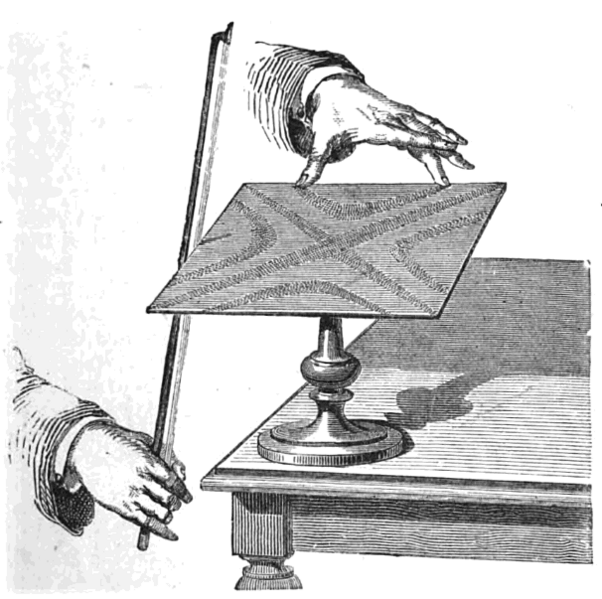Image: Bowing chladni plate

Description: Drawing showing how vibrations are excited in a Chladni plate with a violin bow to create the sand figures of nodal lines called Chladni figures, from an 1879 textbook on acoustics. A metal plate vibrating at resonance is divided into separate regions vibrating in opposite directions bounded by lines of zero vibration called nodal lines. A plate can have many different vibration modes, each with a different pattern of nodal lines. German physicist and musician Ernst Chladni discovered around 1787 that these nodal lines could be made visible by sprinkling sand on a metal plate and exciting vibrations in it by drawing a violin bow across the edge, as shown. The sand collects along the nodal lines where the surface is stationary; the resulting patterns are called Chladni figures. One is visible on the surface. The image also illustrates how different vibrational modes can be excited by touching the plate in different places with the free hand while bowing. Alterations to image: none.
Title: Bowing chladni plate
Credit: Downloaded 2012-11-26 from William Henry Stone (1879) Elementary Lessons on Sound, Macmillan and Co., London, p. 26, fig. 12 on Google Books
Author: Unknown authorUnknown author
Permission: Public domain - published 133 years ago in British book. Searched source for illustration credits, didn't find any.
Usage Terms: Public domain
License: Public domain
Attribution Required?: No
Image usage
The following page links to this image:

